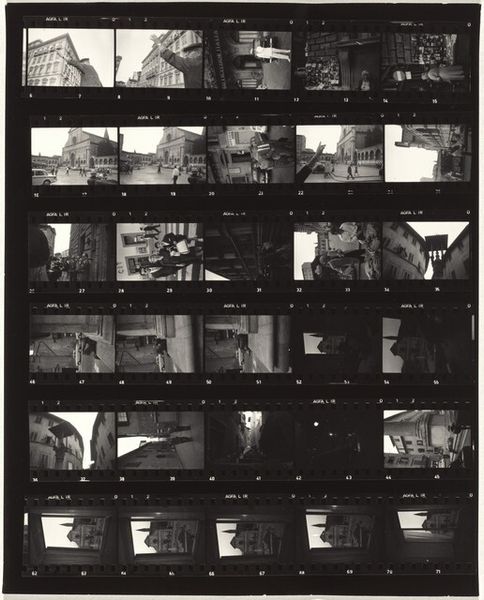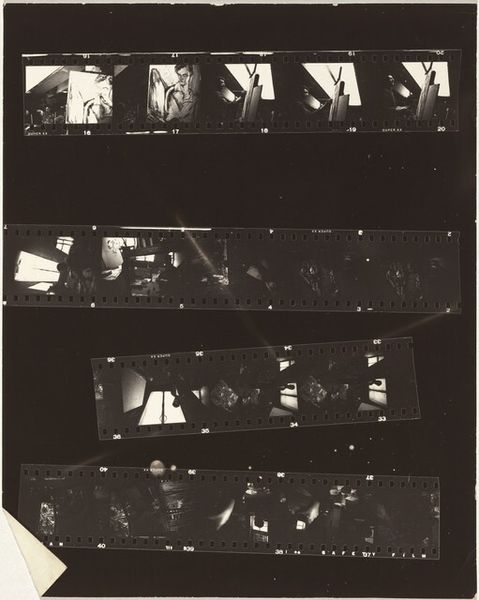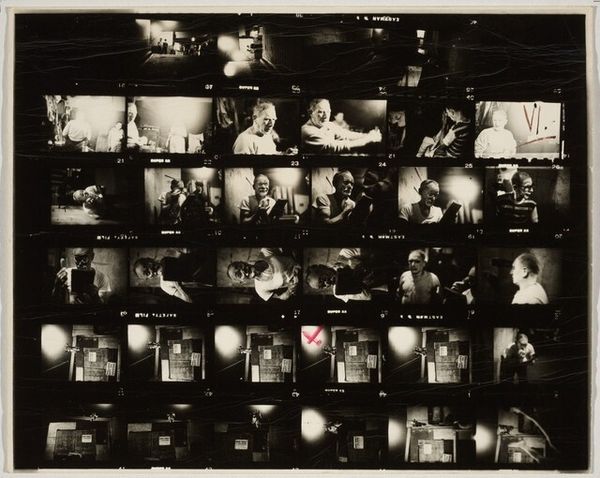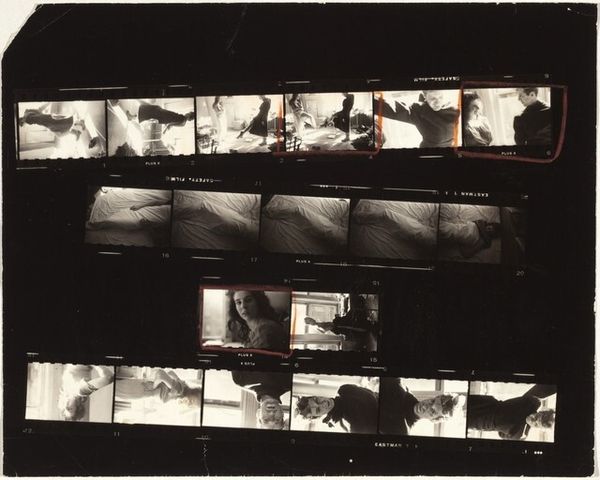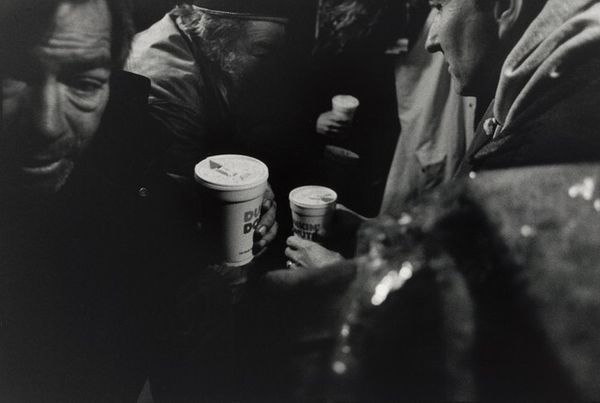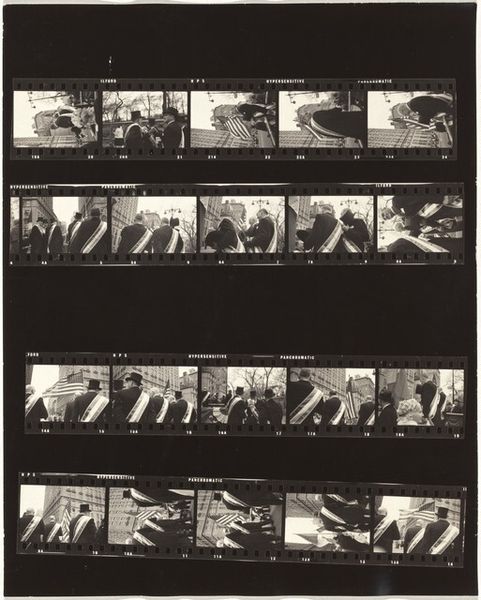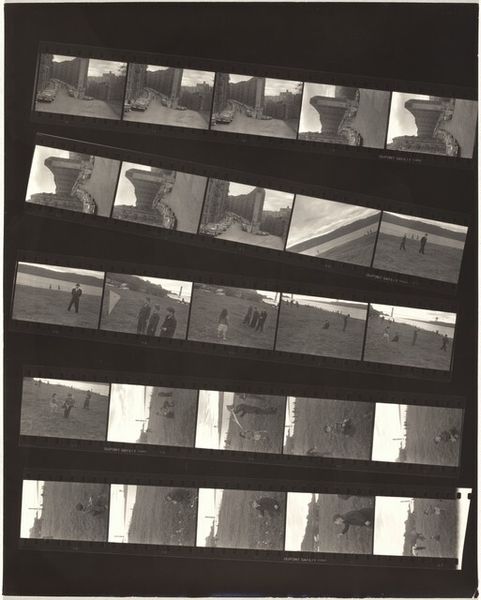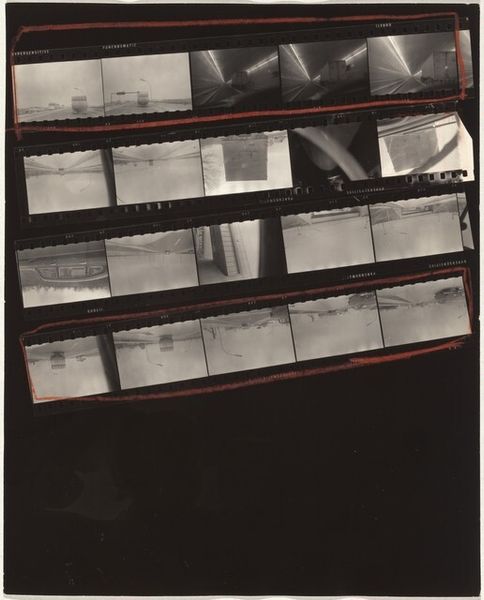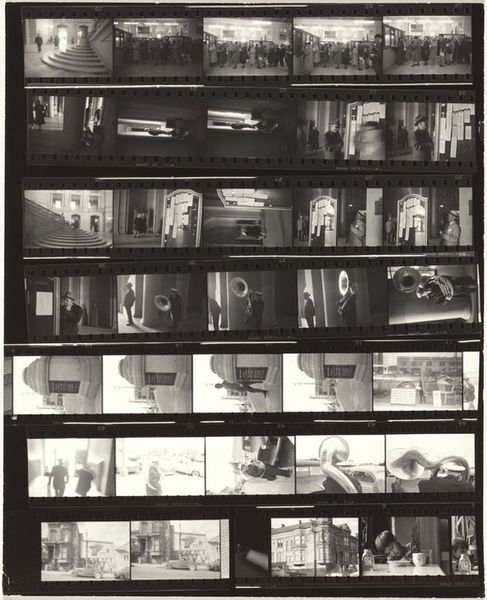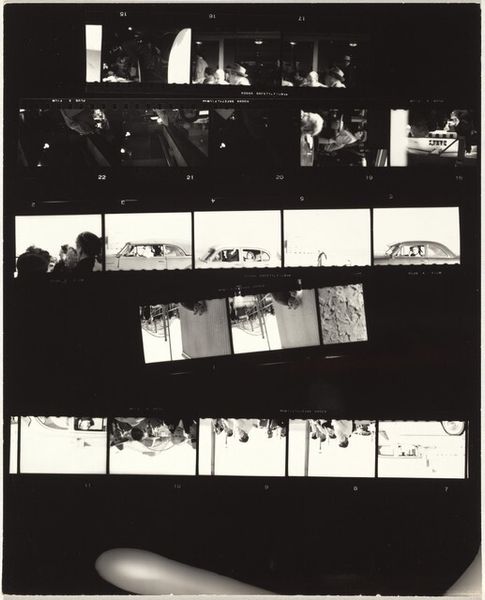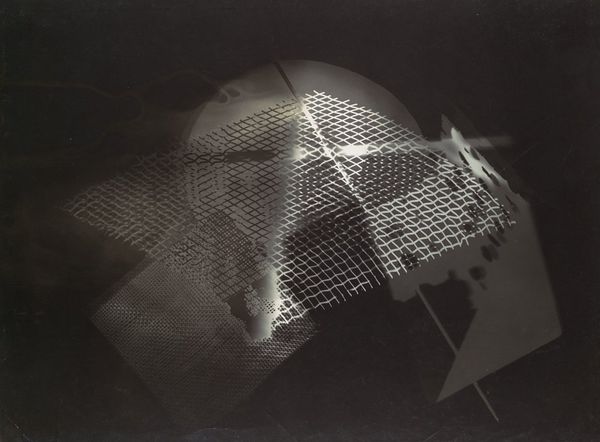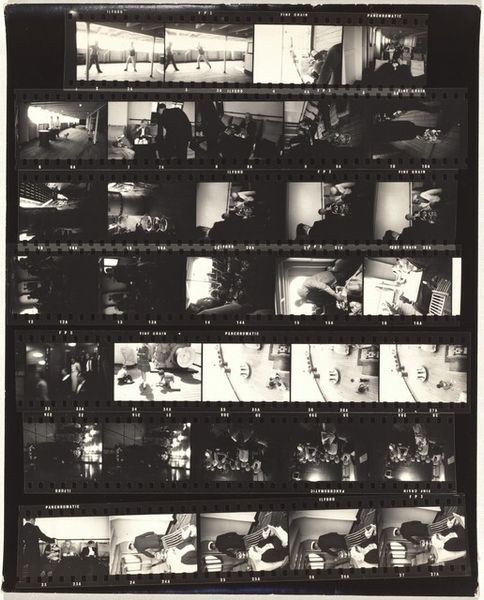
photography, gelatin-silver-print
#
street-photography
#
photography
#
black and white
#
new-york-school
#
gelatin-silver-print
#
monochrome photography
#
cityscape
#
monochrome
#
modernism
#
monochrome
Dimensions: sheet: 27.9 x 21.6 cm (11 x 8 1/2 in.)
Copyright: National Gallery of Art: CC0 1.0
Curator: This is Robert Frank's "New York City no number" from 1947, a gelatin silver print. I find its composition quite intriguing with its juxtaposed panels, presenting a fractured yet compelling view of urban life. What captures your attention about it? Editor: I'm struck by the contrast. Half of the image seems to be gleaming reflections of buildings, while the other half depicts a blurred, rainy street. It’s as if two separate worlds are colliding. What are we meant to make of the materiality, particularly of this contrast? Curator: Well, the gelatin silver print itself becomes significant. Think about its production. This wasn’t a quick snapshot with a digital camera. Frank meticulously crafted these images. The darkroom labor, the chemicals used, and the precise timing all become part of the narrative. The stark contrasts you noted could also reflect the socio-economic contrasts of post-war New York, sharply dividing lives and prospects. Are the "gleaming reflections" luxury cars perhaps? The blurred, rainy street evokes a more anonymous space. Editor: That's an interesting interpretation. It forces you to think about who had access to what materials, who could afford a car or not, and what part they played in that society. Do you think the multiple panels say anything specific about production? Curator: Absolutely. The arrangement challenges traditional photographic representation, suggesting the fragmentation and mass production inherent in modern life. The dark strips act almost as assembly lines. Also, we must remember this period followed significant global conflict. Scarcity would affect materials, process, everything. This informs both its creation and reading. Editor: So, the way the photograph was physically made and put together is just as important as what's being shown in it. Thank you! I’ll definitely view Frank’s other works with this production context in mind now. Curator: Exactly. Thinking about art through its material origins enriches our understanding. I found new considerations myself during our conversation, viewing it not just through representation, but social and economic structures.
Comments
No comments
Be the first to comment and join the conversation on the ultimate creative platform.
